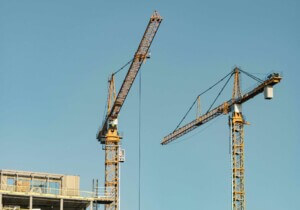Regular followers of the American Institute of Architects’ (AIA) Architecture Billings Index (ABI) may be used to doom and gloom by now. In April, the ABI, a combined figure of regional averages, design demand by sector, project inquiries, and existing design contracts, fell to its lowest levels ever; in May, the numbers were only slightly better, but still represented a decline.
Today, the AIA released the ABI figures for June, and while still negative, there was some good news. In May, the combined ABI was at 32.0 (any figure under 50 is a decrease from the previous month, anything over is an increase in demand and billing), and for June, that number “skyrocketed” to 40.0. While that metric might seem dour, the ABI is a composite, and certain aspects nearly reached the 50 mark, indicating that although the demand for architectural services remains weak, it looks like things are finally stabilizing.
“While business conditions remained soft at firms across the country, those with a multifamily residential specialization saw the most positive signs,” wrote Kermit Baker, AIA chief economist. “Unfortunately, conditions at firms with a commercial/industrial specialization are likely to remain weak for an extended period of time, until hospitality, office and retail facilities can fully reopen, and design demand for this space begins to increase.”
Those “soft conditions” should come as no surprise, considering the U.S. is still gripped by a coronavirus-induced recession that’s hitting the construction industry particularly hard. Breaking down the June ABI by sector, inquiries into new projects rose to 49.3, still a decline but tentatively approaching a plateau. New design contracts fared slightly worse at 44.0, indicating a further decline from May but also getting closer to “no change” territory.
By project type, multifamily residential projects declined again, but only slightly, showing the most demand at 44.7 (previously 34.8), either indicating that there was a rock bottom for residential design demand or that developers are beginning to have more faith in the market. Institutional project demand, normally thought of as a safe port to weather economic storms, remained at 38.9 (previously 35.7). Commercial and industrial project demand remained the weakest at 30.1 (previously 24.8), and firms working on a mix of project types saw demand for services at a relatively weak 35.3.
Regional averages remained quite weak across the country, even two months after construction sites were, by and large, allowed to reopen. However, the dips felt across the board were markedly lesser than in May. In June, the Midwest and West both came in at 36.8; in May, those figures were 29.7 and 36.0, respectively. In May, the Northeast was the weakest region at 25.1, but in June, that changed as it “rose” to 34.2. The South also fared better, as June demand was pegged at 35.9 versus May’s 30.6.
Is this the sign of the start of a recovery, or are we just approaching the lowest possible point for design service demand and things can only improve from here? It’s hard to tell, although the Architecture Billings Index data from July should help paint a more accurate portrait—although, as Baker pointed out, sectors dependent on enticing large groups of people to mingle are likely to remain weak until a coronavirus vaccine is developed, for obvious reasons.











